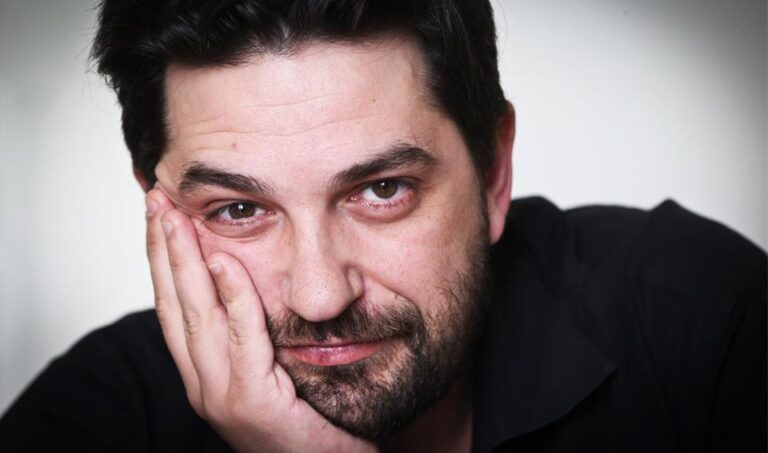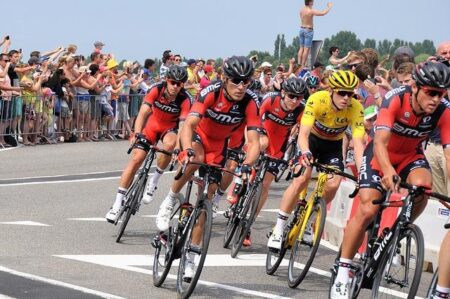In a revealing interview with Le Monde, Tiago Rodrigues, the newly appointed director of the prestigious Avignon Festival, expressed his concerns over the festival’s production resources. As one of Europe’s leading cultural events, the Avignon Festival has long been a beacon of artistic innovation and theatrical excellence. However, Rodrigues argues that it now faces a critical challenge that threatens to undermine its legacy. With a call for increased investment and support, he highlights the urgent need to enhance the festival’s production capabilities, ensuring it can continue to attract top-tier talent and deliver groundbreaking performances. This candid discussion sheds light on the evolving landscape of cultural festivals and the resources necessary to sustain their vibrancy in an increasingly competitive environment.
Challenges Facing the Avignon Festival’s Production Quality
The Avignon Festival, a revered hub of cultural expression, is currently grappling with a notable disparity between its aspirational vision and the resources allocated to its productions. Tiago Rodrigues, the festival’s artistic director, has vocally expressed his concerns regarding the festival’s financial constraints. Budget limitations, inadequate infrastructure, and fluctuating public funding are just a few of the critical issues that threaten to undermine the quality of the artistic experiences offered. With its rich history of innovation, the festival finds itself at a crossroads, struggling to maintain its reputation for excellence while juggling the reality of dwindling resources.
Moreover, the festival faces the pressing challenge of attracting top-tier talent without the necessary financial support. Aspects such as artist stipends, technical equipment, and venue accessibility have become pivotal in determining the caliber of performances showcased. The following factors exemplify the production hurdles encountered:
- Creative funding deficits that limit collaborative projects.
- Demanding logistical requirements leading to compromised production quality.
- Scarcity of specialized staff in essential production roles.
Consequently, this compromise creates a ripple effect, not only affecting artists but also the festival’s audience, which has come to expect exceptional performances that push artistic boundaries. A detailed evaluation of resource allocation could be key in fortifying the festival’s legacy and ensuring it remains a beacon of theatrical innovation.
Tiago Rodrigues on the Importance of Enhanced Funding and Resources
In a recent statement, Tiago Rodrigues stressed the pressing need for increased funding and resources within the cultural sector, particularly highlighting the Avignon Festival’s current challenges. Despite its rich history and global prestige, the festival is operating under significant financial constraints that inhibit its potential. Rodrigues emphasized the critical connection between adequate funding and the quality of artistic productions, stating that:
- Creative expression thrives on support: Financial backing directly affects the caliber of performances and artists involved.
- Audience experience is compromised: Limited resources can lead to a diminished experience for festival-goers, affecting attendance and engagement.
- Future sustainability at risk: Without enhanced investment, the festival’s long-term viability as a cultural landmark is jeopardized.
Furthermore, Rodrigues outlined the strategic vision needed to attract sponsors and government backing, advocating for a collaborative approach amongst stakeholders. He suggested that a well-resourced festival could serve as an incubator for emerging talents and innovative productions, leading to:
| Key Benefits | Expected Outcomes |
|---|---|
| Enhanced Artistic Quality | More captivating performances |
| Increased Audience Engagement | Higher attendance rates |
| Support for Local Artists | Stronger community ties |
Rodrigues concluded by asserting that meaningful investments in the arts are not merely costs but rather essential contributions to society’s cultural fabric, underscoring the urgent need for action to secure the future of the Avignon Festival and similar institutions. Without necessary enhancements in funding and resources, the vibrancy of artistic expression risks fading into history.
Cultural Impact: The Need for Support in the Performing Arts
The performing arts have always been a fundamental pillar of cultural expression, reflecting society’s values, struggles, and aspirations. In light of Tiago Rodrigues’s remarks regarding the Avignon Festival’s limited production resources, it has become increasingly evident that the sustainability and growth of such vital artistic platforms require more robust support. Financial backing—not only from governments but from private sectors and local communities—is essential in nurturing innovative productions that challenge conventional narratives and engage diverse audiences. When invested in correctly, these resources can transform the cultural landscape, fostering an environment where creativity flourishes.
Furthermore, the decline in financial support for festivals like Avignon raises critical questions about the long-term viability of the performing arts. Artists rely on the symbiotic relationship between funding and artistic exploration to bring their visions to life. Without sufficient resources, festivals risk diluting their offerings, compromising the quality of performances and the potential for artistic innovation. This situation warrants a collective response, urging stakeholders to recognize the economic and social benefits of investing in the arts, such as:
- Enhancing cultural tourism
- Creating employment opportunities
- Stimulating local economies
By prioritizing support for events like the Avignon Festival, we not only preserve a crucial cultural heritage but also cultivate a vibrant artistic community poised to make impactful contributions to society.
Future Directions for the Avignon Festival and Its Global Standing
The Avignon Festival, known for its rich history and vibrant artistic expression, is at a critical juncture. Tiago Rodrigues emphasizes that the festival lacks the production resources essential for its ambitions. This situation calls for a reinvigorated approach that not only seeks increased funding but also diversifies its audience base. The festival’s future could hinge on expanding partnerships with international organizations, fostering collaborations that enhance its global footprint. By doing so, the festival could align itself more closely with other influential global arts events, thus multiplying its impact across boundaries.
Additionally, considerations towards digital innovation are paramount in shaping the festival’s evolution. Incorporating technology can create alternative platforms for engagement, allowing artists to connect with global audiences beyond the confines of the physical event. Strategies might include:
- Innovating online streaming options for performances.
- Utilizing social media for dynamic audience interaction.
- Encouraging virtual reality experiences that immerse viewers in the festival atmosphere.
By embracing these dimensions, the Avignon Festival can solidify its status not merely as a local landmark but as a major player in the international arts scene, driving creative dialogues that resonate worldwide.
Key Takeaways
In conclusion, Tiago Rodrigues’ candid reflections on the Avignon Festival shed light on a growing concern within the world of theater and performing arts. As he navigates the complex landscape of artistic ambition and resource limitations, Rodrigues emphasizes the urgent need for increased support and investment in such prestigious cultural events. The Avignon Festival, a beacon of creativity and innovation, deserves better production resources to truly fulfill its potential. As the festival continues to be a vital platform for emerging voices and established artists alike, it is crucial for stakeholders, including government bodies and private sponsors, to come together and ensure that this essential cultural experience can thrive in the years to come. The challenge now lies in translating awareness into action, ensuring that the festival not only survives but flourishes in an increasingly competitive artistic landscape.




